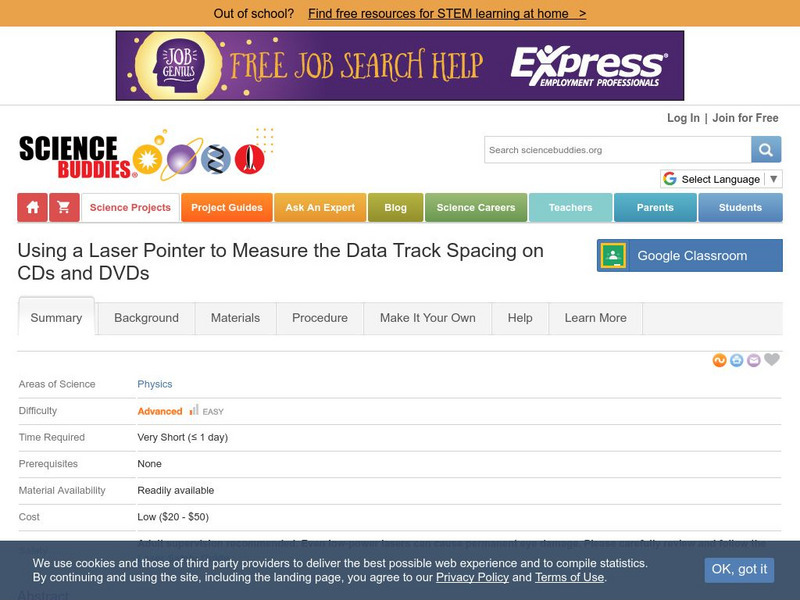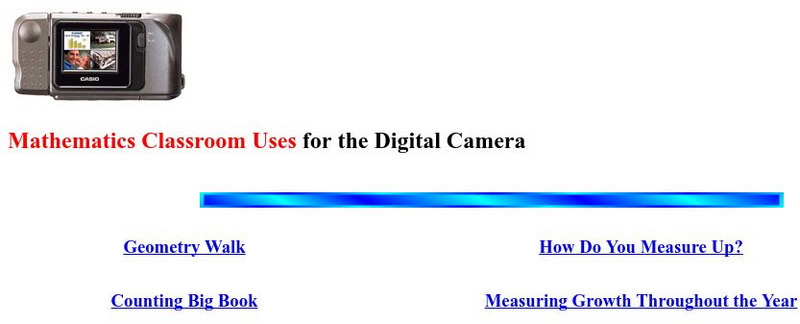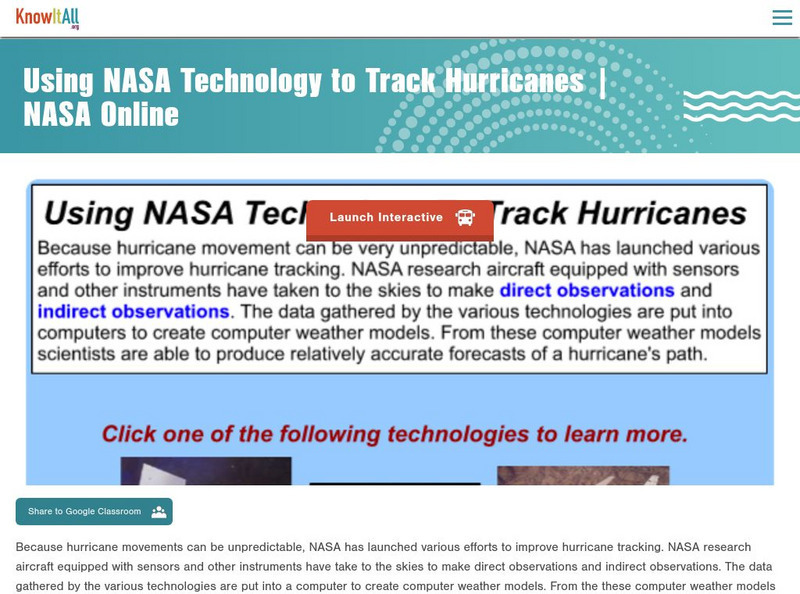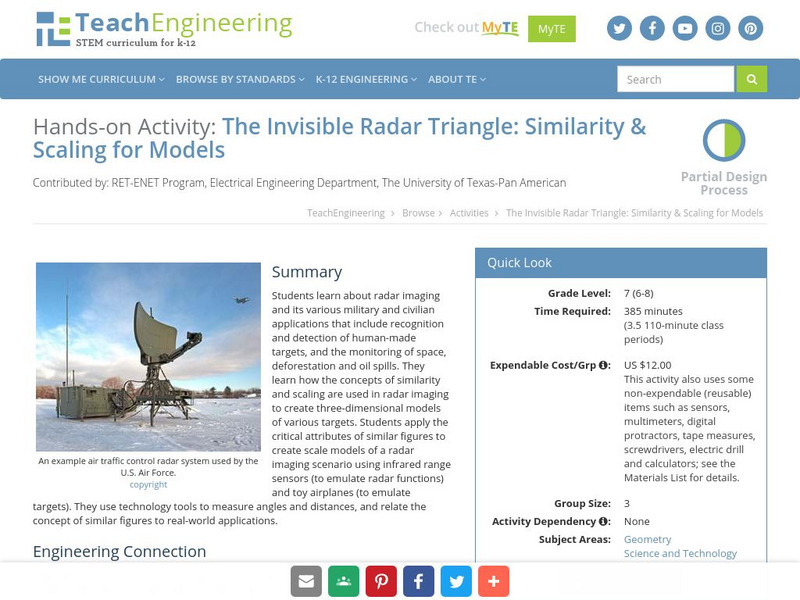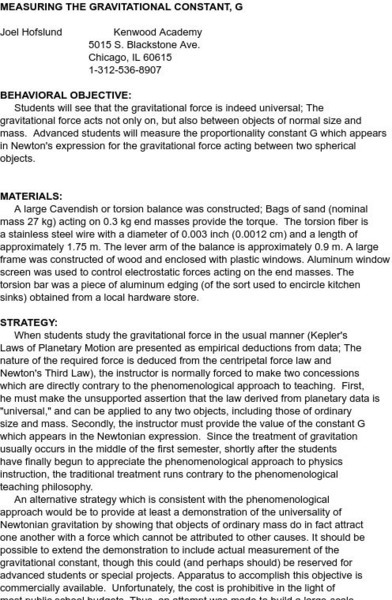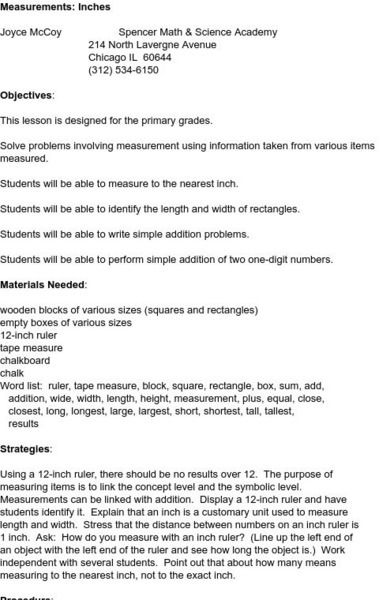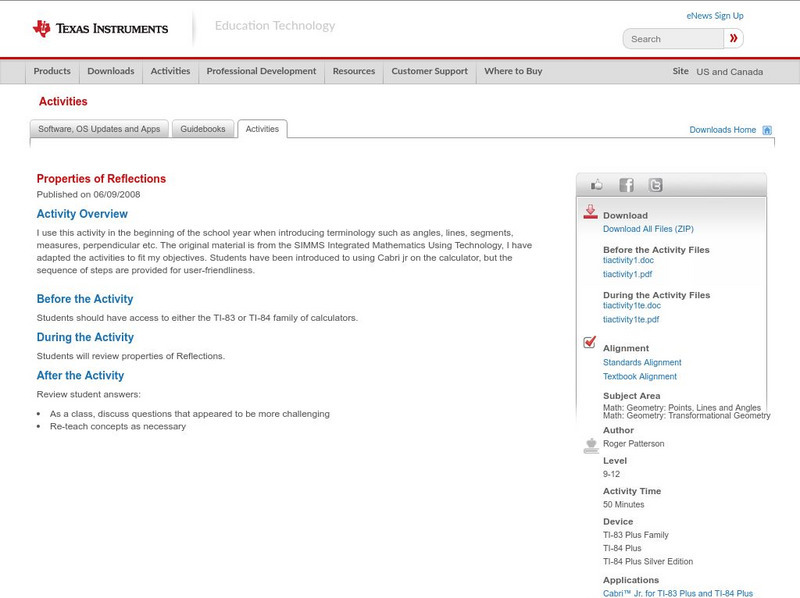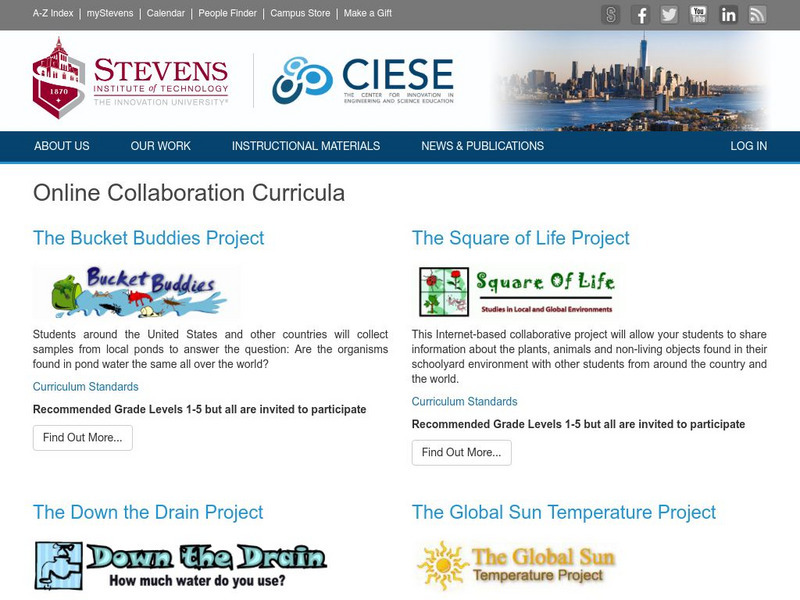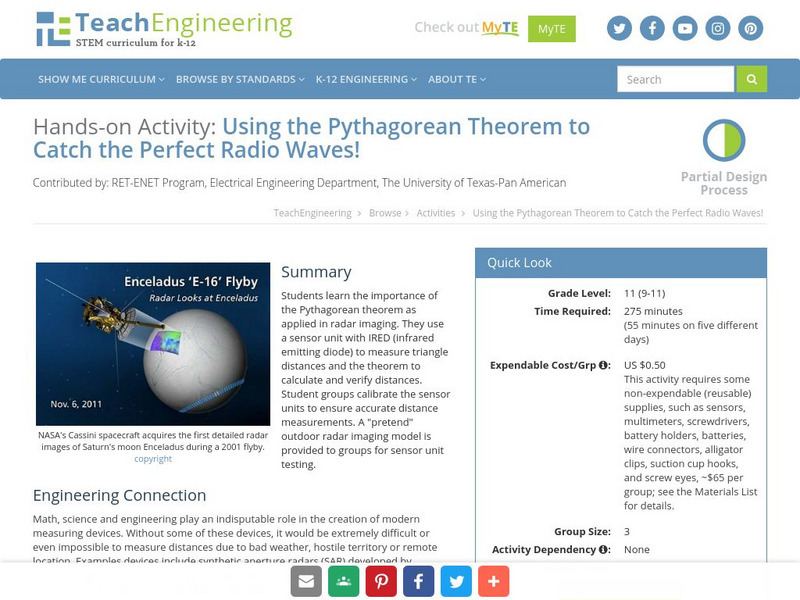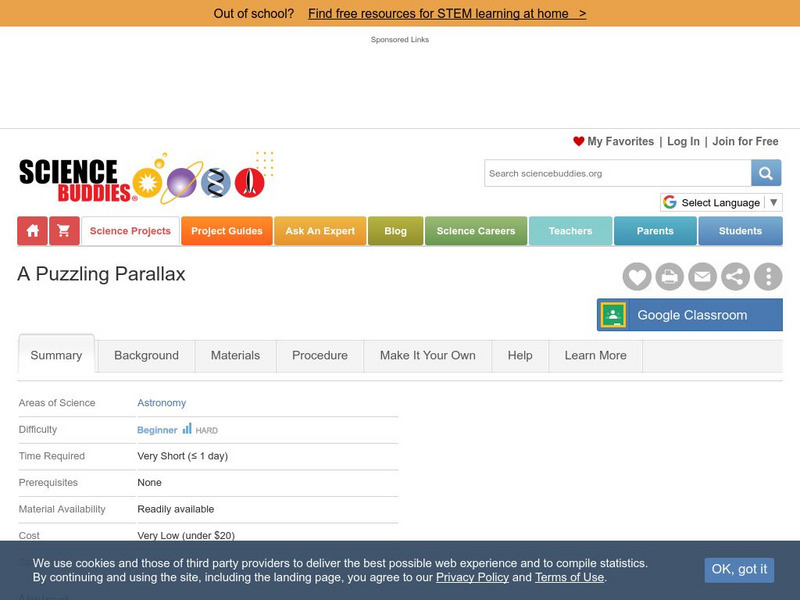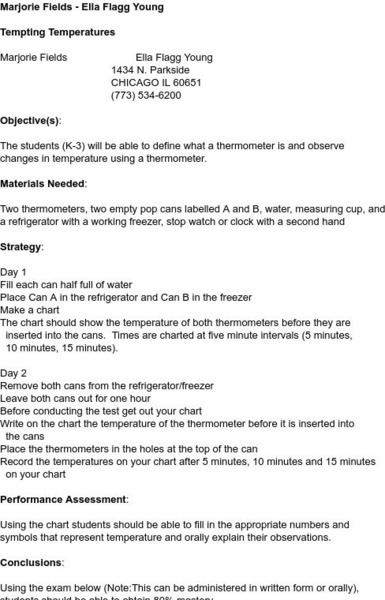Science Buddies
Science Buddies: Using Laser Pointer to Measure Data Track Spacing on C Ds, Dv Ds
You've probably noticed the colorful patterns "reflecting" from the shiny surface of a CD disk. What you are seeing is actually diffraction of white light, and the rainbows of color are diffraction patterns. In this project you'll learn...
Other
Adb: How Remote Sensing Technology Improves Efficiency of Irrigation Systems
With the increase of free satellite data combined with scientific algorithms and cloud computing capacity, developing affordable operational monitoring systems for irrigation management in Asia is now feasible. The use of virtual field...
US Department of Education
Nces: Technology in Schools Assessing Technology
This guide was written by the National Forum on Education Statistics under NCES's Cooperative Education Statistics System. Directed toward state and local education agencies, it describes how to measure technology use by examining...
Other
University of Central Florida: Mathematics Classroom Uses for the Digital Camera
This site has a few creative lesson plans on using the digital camera in a mathematics classroom. Includes geometry and measurement activities. (The link for the counting book does not work in archived version of site.)
Canada Science and Technology Museum
Canada Science and Technology Museum: Background Information for Energy
Energy! What do you know about it? Use this terrific site to find out everything about it through a series of Q&As. Educators will find useful lesson plans at the related Teacher's site.
Other
Sun Associates: 3 Steps for Technology Evaluation [Pdf]
This pdf document outlines the three steps and outcomes of a technology evalution project. Although this process is designed to be facilitated by an outside agency, districts could use this information to design their own evaluation...
Other
How Technology Is Improving Productivity and Efficiency in Manufacturing Sector
The article describes how the use of different types of technology are improving manufacturing efficiencies, including 3-D printing, metrology (science of measurement), exoskeleton suits, and drones.
South Carolina Educational Television
Know It All Media: Tracking Hurricane Technology
Find out how scientists have improved hurricane tracking technology through new aircraft and advanced instruments.
TeachEngineering
Teach Engineering: The Invisible Radar Triangle
Students learn about radar imaging and its various military and civilian applications that include recognition and detection of human-made targets, and the monitoring of space, deforestation, and oil spills. They use technology tools to...
Utah Education Network
Uen: Design Your Own Bedroom
Many students dream of designing their ideal bedroom. In this exercise, students will be required to limit their designs by size (as a specific volume) and price (a specific amount). They must design the floor plan, including furniture...
Science and Mathematics Initiative for Learning Enhancement (SMILE)
Smile: Measuring for Cookies
For this lesson, young scholars use math and physics skills to follow directions when making cookies. This is a very detailed and structured lesson!
Other
Meter My Educational Technology Evaluation Resources
This site provides a variety of educational technology evaluation resources focused on helping schools and districts measure the role technology plays in teaching and learning. It has a great collection of relevant information on...
Concord Consortium
Mobile Inquiry Technology: Decaying Batteries
This investigation has students investigating and measuring the decay of batteries as their electric charges are used up in circuits.
Science and Mathematics Initiative for Learning Enhancement (SMILE)
Smile: Measuring the Gravitational Constant, G
A demonstration/lab idea for determining the numerical value of the universal gravitation constant using a torsion balance.
Other
Specialist Schools and Academies Trust: Learn Ar: Maths: 3 D Objects
A learning resource that incorporates augmented reality (AR), using a camera, where students explore the volume and surface area of 3-D figures. The home page for this site has a PDF resource that explains how AR works and provides...
Science and Mathematics Initiative for Learning Enhancement (SMILE)
Smile: Measurement Inches
This lesson plan for primary students gives students hands-on practice in using a ruler and understanding customary measurements, length and width in inches. Students also create simple one and two digit addition problems related to the...
PBS
Pbs Learning Media: Ready to Learn 2010 2015 Initiative (Pbs Kids Lab)
PBS KIDS Lab is built on the belief that every new technology is a learning opportunity. This page includes links to PBS programming, apps, games, videos, activities, and education resources. Teaching Tips provide step-by-step lessons...
Texas Instruments
Texas Instruments: Properties of Reflections
I use this activity in the beginning of the school year when introducing terminology such as angles, lines, segments, measures, perpendicular etc. The original material is from the SIMMS Integrated Mathematics using Technology, I have...
Center for Innovation in Engineering and Science Education, Stevens Institute of Technology
Ciese: Collaborative Projects
Using a variety of science topics, these projects link your class with classes around the world in data collection and analysis. There are projects recommended for all grade levels. Begin dates and end dates are listed to help in...
PBS
Pbs Teachers: Real Scientists: Bioengineer
Explore how bioengineers use technology and knowledge about the human body to design office, wheelchair and automotive seats.
TeachEngineering
Teach Engineering: Catching the Perfect Sar Waves!
Students learn the importance of the Pythagorean theorem as applied in radar imaging. They use a sensor unit with IRED (infrared emitting diode) to measure triangle distances and the Pythagorean theorem to calculate and verify distances....
Science Buddies
Science Buddies: A Puzzling Parallax
Did you know that ancient astronomers could measure the distance to other stars? They could also distinguish between stars and planets. How could they do that without modern technology of telescopes? See if you can discover the link...
Science and Mathematics Initiative for Learning Enhancement (SMILE)
Smile: Tempting Temperatures
In this lesson plan students learn how to use a thermometer and compare changes in temperature using water in the fridge and water in the freezer. Helps students create charts to analyze data.
Alabama Learning Exchange
Alex: Land Surveying Project
This project resulted from of the collaboration of a computer aided drafting teacher, Chris Bond, and a math teacher, Lee Cable, (Hewitt-Trussville High School) to provide higher math expectations in CT and real life application in...
